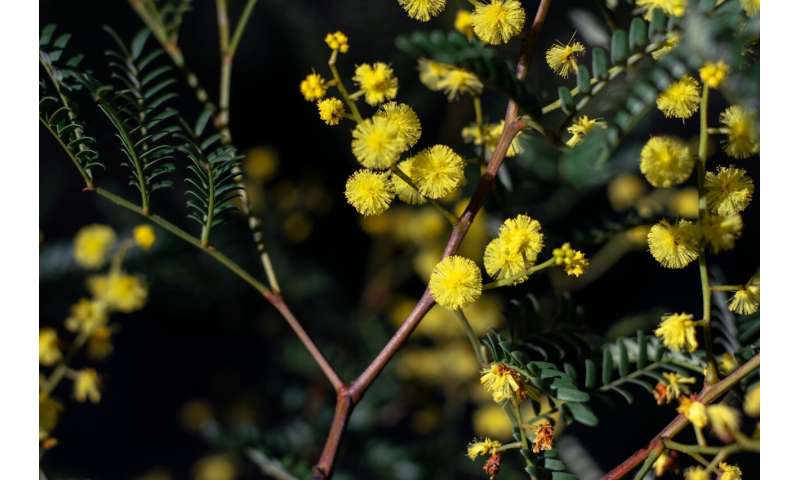How Australian wattles took over the world and brought their fire risk with them: New book

The wattle is Australia's national flower, but our bright golden emblem has a dark side with scientists now concerned by growing fire risks posed by the global spread of the species formally known as Acacia.
A new book co-edited by Macquarie University botanist Associate Professor Jaco Le Roux, "Wattles: Australian Acacia Species Around the World," explores the biology, ecology and evolution of the remarkable Australian native plants.
"There has been an enormous amount of research into these plants, and our book is the most comprehensive collection of information about wattles you will find anywhere, " says Associate Professor Le Roux.
Since colonization, at least 417 wattle species have been introduced to areas outside Australia, establishing themselves as non-native species in an estimated 172 countries. Wattles are used globally in forestry and farming, for fuel, in building materials, for human food in the form of edible wattle seeds and for revegetation and sand stabilization.
However some Acacia species can alter soil chemistry, reduce biodiversity, and disrupt nutrient cycles—plus they can pose a more sinister danger in a warming world—that of heightened fire risks.
Flame trees
Associate Professor Le Roux says outside their natural habitat, many highly flammable and fire-adapted wattle species have become invasive weeds.
"Acacia cyclops—a highly flammable species that produces a lot of fuel for fires—has been shown to increase both the frequency and intensity of wildfires in areas it invades, with devastating consequences for ecosystems and human settlements," says Associate Professor Le Roux.
"In the Mediterranean-style ecosystems where many wattles are now invasive, trees were historically absent, and so these wattles are taking over a new structural role as they transform the landscapes with high density tree cover," he says.
Mediterranean shrublands, such as South Africa's fynbos biome, are fire-dependant ecosystems that need to naturally burn at least once every fifteen years because many species reproduce based on fire intervals, he says—but wattles bring a massive increase in fuel load.
"This leads to more severe and frequent fires with very serious implications for both the ecology of native species, and for human settlements."
How wattles traveled
There are more species of wattle identified than any other Australian plant group—1,082 species to be exact, and only 17 are not native to Australia.
One wattle species is native to the Hawaiian Islands, one to Madagascar and one to Reunion Island in the Indian Ocean for example.
"Our earlier research used some very sophisticated genomic analyses to show that the ancestor of the Acacia population in Hawaii dispersed naturally from Australia to the Hawaiian Islands, and then onwards to Reunion Island," says Associate Professor Le Roux.
"This was the single longest dispersal event ever recorded in history for a plant," he says, explaining the seeds were probably spread by birds."
While invasive, fire-prone wattle species cause damage, other wattle species are prized for their economic value, and for being cheap and easy to grow.
"Acacia mangium is an important cash crop that provides income and livelihood security to many households in south east Asia," says Associate Professor Le Roux.
"While wattle species such as Acacia cyclops pose a significant fire risk in South Africa, many rural people in that country use the species as their primary source of fuel for cooking and heating."
They are used for purposes as diverse as timber production in South Africa, to make glue in Ethiopia and to produce wood for the pulp and paper industry in Vietnam.
"Wattles show how important it is to take care when introducing species to new environments, to consider both the positive and the potentially negative consequences," says Associate Professor Le Roux.
"Wattles—Australian Acacia Species Around the World," by David Richardson, Johannes Le Roux and Elizabete Marchante will be on sale in October.
This article was first published on The Lighthouse, Macquarie University's multi-media publishing platform.
Provided by Macquarie University